Antipater › Vetulonia » Ancient origins
Articles and Definitions › Contents
- Antipater › Who Was
- Vetulonia › Antique Origins
Ancient civilizations › Historical and archaeological sites
Antipater › Who Was
Definition and Origins
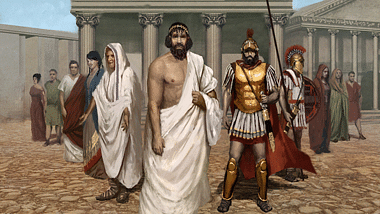
Antipater (c. 399-319 BCE) was a Macedonian statesman and loyal lieutenant of both Alexander the Great and his father Philip II of Macedon. As a regent in Alexander 's absence, Antipater subdued rebellions and mollified uprisings, proving his unwavering loyalty for more than a decade. Unfortunately, a serious disagreement between the two led to a once trusted commander being implicated in the suspected poisoning of one of history's greatest leaders.
EARLY CAREER
Antipater had always been considered a trustworthy commander, representing Philip at Athens in 346 BCE. Following the Battle of Chaeronea in 338 BCE, he was entrusted with the task of accompanying the young Alexander in taking the ashes of fallen Athenians killed in battle to the city. After Philip's assassination by the disgruntled Pausanias, a disagreement arose among the nobility as to who was the rightful heir to the throne of Macedon. At a meeting presided by Antipater, several nobles voiced support for Amyntas, the son of Philip's brother Perdiccas. Some of these men disliked Alexander only because his mother was not a true Macedonian. However, Antipater and fellow commander Parmenio, who was in Asia Minorat the time, remained loyal to Alexander, so with the urging of his doting mother, Olympias, Alexander became king at the age of twenty.
The first few years of his reign were not easy for the young king. Following his father's death, Alexander found not only his ability but also the strength of Macedon's control over Greece threatened. While the young king and his army traveled northward to secure Thrace in 335 BCE, Antipater remained in Macedon, serving as his deputy. While in Thrace, word of Alexander's supposed death made its way to the Greek city of Thebes and they revolted. When they heard of the approaching the Macedonian army, they assumed, incorrectly, that it was under the command of Antipater. Wrong! It was Alexander, and the city would suffer. The rest of Greek city-states - except for Sparta - quickly realized the true strength of Alexander and submitted willingly to his leadership.
ALEXANDER'S REGENT
Now, with most of Greece under Macedonian control, the young king turned his sights eastward to Persia and made plans to cross the Hellespont into Asia Minor, finally fulfilling his father's life-long dream. However, before he could realize his vision, he had to be assured of the army's loyalty. Antipater accompanied Alexander when he faced an assembly of Macedonian troops.Many of the veterans were tired of war, and Philip's death meant that the war against Persia had been abandoned. As the young king stood before them and cried, he promised each of them glory and riches. To a man they swore their loyalty. Both Antipater and Parmenio, however, urged Alexander to reconsider and wait until an heir was born to secure the throne. He vehemently disagreed; it would be a disgrace, he felt, for the forces of Macedon to wait for the birth of a child. To maintain authority in his absence, he left Greece and his beloved Macedon in the capable hands of Antipater as hegemon. In 334 BCE Alexander gathered his forces and crossed into Asia Minor. The young king would never return.

Alexander the Great
Aside from his role as hegemon or regent, Antipater was designated the headmaster of the School of Pages as well as assigned the daunting task of handling the finances of both the military and naval forces. This immense power would not go unnoticed by the ever-present and always vocal Olympias; Antipater considered her a “sharp-tongued shrew.” Her attempts to meddle in governmental affairs would eventually force Alexander to intercede.
Luckily, however, Antipater was not left alone for he had an army of 12,000 phalangites, 1,000 Companion cavalry, five hundred light-armed cavalry, and the power to summon the militia of the Greek city-states. Despite the constant demand for reinforcements, Antipater was able to amass a total of over 40,000 infantry and cavalry, and he would soon need it. Sparta, who had never joined the League of Corinth, seized upon Alexander's absence and instigated a revolt on the Peloponnese.
ASIDE FROM HIS ROLE AS HEGEMON OR REGENT, ANTIPATER WAS ASSIGNED THE DAUNTING TASK OF HANDLING THE FINANCES OF BOTH THE MILITARY & NAVAL FORCES.
In 331 BCE, about the time Alexander was preparing to meet Darius at Gaugamela, King Agis III of Sparta joined with forces from Elis, Arcadia, and Achaea, and declared war on Macedon. The Spartan king had been negotiating secretly with the Persians, seeking their assistance. He had planned to meet Darius's commanders, Autophradates and Pharnabazus on the island of Siphnos to discuss an alliance, but the Persian defeat at Gaugamela ended any further discussion. Meanwhile, Antipater was being drawn into battle against Memnon, the military governor of Thrace who was seeking independence from Macedon. Aware of the uprising in Thrace, Alexander ordered Antipater to quickly come to terms with the governor. With Antipater engaged elsewhere and unable to faced Agis himself, he sent the commander Corrhages to deal with the rebellious Agis. Unfortunately, Corrhages was defeated and killed.
With little alternative, Antipater reached an agreement with Memnon and headed southward. Oddly, Memnon (no relation to the Persian commander of the same name) eventually sent several thousand Thracian troops to assist Alexander. Antipater and Agis met at Megalopolis, a city north of Sparta. The Macedonian commander was victorious, wiping out all Spartan resistance. The defeated Spartan king was carried off the field of battle by his troops, dying from a spear wound. Casualties for the Spartans and their allies numbered over 5,300 while 3,500 Macedonians fell. When Alexander heard of the victory, he considered it insignificant.
CONFLICT WITH OLYMPIAS
Although Antipater and Alexander had their differences, nothing compared to the intense dislike that existed between Antipater and Olympias. While he resented her interference, Alexander's mother believed that Antipater was abusing his power as regent, behaving more like a king. Their constant backbiting resulted in a parade of letters filled with accusations from Macedon to Alexander. Of course, the king was torn between his love for his mother and his respect of Antipater. In his Campaigns of Alexander, historian Arrian wrote, “Indeed, the stories of her behavior gave rise to a much-quoted remark of Alexander's, to the effect, that she was charging him a high price for his nine months lodging in her womb" (368).
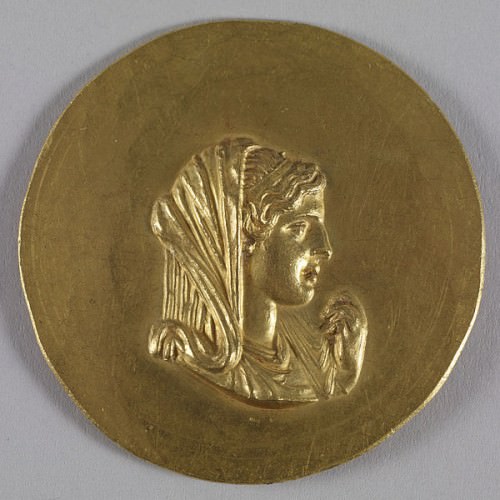
Olympias
Listening more to his mother than his commander, in 324 BCE Antipater was replaced as regent by the commander Craterus and ordered to appear before the king at Babylon. Antipater resented the order, considering it a death warrant. Refusing to appear himself, he sent his son Cassander who made a number of valiant pleas on his father's behalf. Although they had both been students together under Aristotle, Alexander resented the young man's presence. The tension between the two increased when Cassander unknowingly laughed at seeing a number of Persians prostrating themselves before the king - an old Persian custom called proskynesis. Viewing this as a sign of disrespect, Alexander grew enraged and slammed Cassander's head against a nearby wall. The incident would haunt him for the remainder of his life. Years later, whenever Cassander saw a statue or painting of Alexander, he would faint. To some the incident would be seen as insignificant, just another outburst by Alexander, if not for what would happen afterwards.
ALEXANDER'S DEATH
While in Babylon, Alexander became extremely ill after a late night party - an illness from which he would never recover. On June 10, 323 BCE, the great Alexander died. A debate as to the cause exists to this day. Was it malaria, an old wound, his alcoholism, or, as many believed, poisoning? Rumors surrounding this latter cause brought the name of Antipater into the discussion. Did he willingly participate in a conspiracy to poison Alexander? Did he order his son Iolaus, the cupbearer to the king, to administer the fatal dose, for was it not Iolaus's lover who had invited the king to the party?
Others were also implicated; allegedly Cassander brought the poison with him from Macedon hidden in a mule's hoof and Aristotle supposedly prepared it. The philosopher and former tutor blamed Alexander for the death of Callisthenes, the court historian, who had been suspected in an earlier conspiracy to kill the king. Not everybody was convinced of these accusations, though.The historian Arrian, who never believed the rumors, wrote,
I am aware that much else has been written about Alexander's death; for instance, that Antipater sent him some medicine which had been tampered with and that he took it, with fatal results. Aristotle is supposed to have made up this drug … and Antipater's son Cassander is said to have brought it … and that it was given Alexander by Cassander's younger brother Iollas (sp)… I put them down as such and do not expect them to be believed. (394 -395)
The historian Plutarch wrote in his Greek Lives of Olympias' reaction to the incident stating that on the strength of information she received five years after her son's death she had a “number of men put to death” and scattered the exhumed remains of Iolaus's body because it was he who had administered the poison (380).
THE LAMIAN WAR
Alexander died without naming an heir or successor. Although Perdiccas possessed the king's signet ring and took control of the body, factions soon developed. While these factions would change over the next three decades, Antipater and his son initially sided with the commanders Ptolemy and Antigonus. When each commander claimed part of Alexander's empire for himself, Antipater took control of Macedon. However, peace at home would not remain for long. Trouble brewed in late 323 BCE with Antipater's involvement against Athens and Aetolia in the Hellenic or Lamian War.
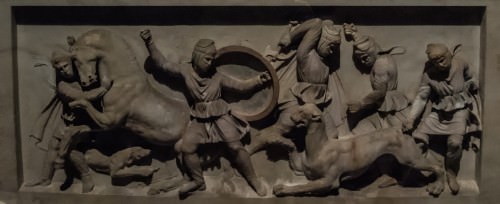
Alexander Sarcophogus
The war was initially caused by Leosthenes, an Athenian who despite being raised in Macedon detested the Macedonians.Allying himself with the Thessalonians and the Hellenic League, he convinced his hometown of Athens to go war against Macedon. The coalition almost defeated Macedon. An excellent commander in his own right, Leosthenes cornered Antipater at Lamia in Thessaly. Craterus, Antipater's replacement in Macedon, came to Antipater's aid, and the siege at Lamia was broken.
In the subsequent battle at Crannon in 322 BCE, the Athenian commander was killed, forcing an end to the war. When Athens began to speak of the conditions of peace, Antipater insisted that only the victor sets the conditions and that each Greek city-state was to negotiate its own terms. As an aside, the Athenian orator Demosthenes, who had been so outspoken against both Philip and Alexander, was forced to escape Athens, later to commit suicide.
DEATH & LEGACY
Antipater died in 319 BCE at the age of eighty. His son Cassander, as always, remained at his side. Unfortunately, Cassander was not named the heir. Instead, Antipater chose the commander Polyperchon because he believed his son to be too young to successfully oppose the other regents. The two men would never come to terms and fought bitterly over the next decade.Eventually, Cassander would take control Macedon and before his own death in 297 BCE would execute not only Alexander's wife Roxanne and son Alexander IV but also the ever-present and always outspoken Olympias.
Vetulonia › Antique Origins
Definition and Origins
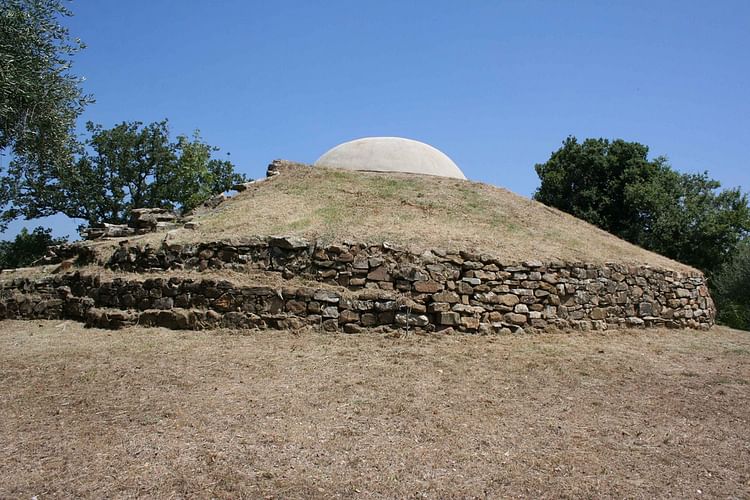
Vetulonia ( Etruscan : Vetluna), located in the hills near the western coast of central Italy, was an important Etruscan town from the 9th to 3rd century BCE. The site has many impressive tumulus tombs which were rich in artefacts illustrating the eclectic nature of Vetulonia's metal industry and arts in general, as well as attesting to trade relations with Egypt, Phoenicia, the Near East, and Greece.
VILLANOVAN SETTLEMENT
That Vetulonia was a Villanovan settlement is evidenced by the discovery of several circle tombs. These date to the Proto-Villanovan period (1100-900 BCE) and were constructed for elite burials using trenches surrounded by stones. They measure from 15 to 30 metres in diameter and contained multiple burials. Alternatively, simpler pit tombs contain the typical biconical urns of the Villanovan period – two ceramic vessels with the smaller one forming a lid – which contained cremated remains.
ETRUSCAN VETULONIA
By the 8th century BCE, the Villanovan had matured into the Etruscan culture proper, and Vetulonia had two urban centres along with a large cemetery. Its prosperity was based on its location on Lake Prile and so easy access to both maritime and inland trade. Vetulonia, putting to good use the metal resources for which Etruria became famous ( copper, iron, lead, and silver ), was also a manufacturing centre in its own right; bronze figurines survive from this period. The population grew as a consequence, and the two urban centres joined.
VETULONIA PUT ITS MINERAL RESOURCES TO GOOD USE & BECAME A THRIVING TRADE & MANUFACTURING CENTRE.
Vetulonia became an important member of the Etruscan League, a loose confederacy of 12 (or perhaps 15) Etruscan towns.They included Cerveteri (Cisra), Chiusi (Clevsin), Populonia (Puplona), Tarquinia (Tarchuna), and Vulci (Velch). Very little is known of this league except that its members had common religious ties and that leaders met annually at the Fanum Voltumnae sanctuary near Orvieto (exact location as yet unknown).
Tumuli tombs continued to be built during the 7th century BCE but on a larger scale – some have a raised stone base 70 metres in diameter and contain multiple chambers. They are lined with stone slabs and surrounded by a number of smaller trench tombs. One such tomb, the Pietrera tumulus, has a single chamber with a corbelled roof supported by a single column. It contained eight almost life-size male and female figures, all standing, carved from limestone.
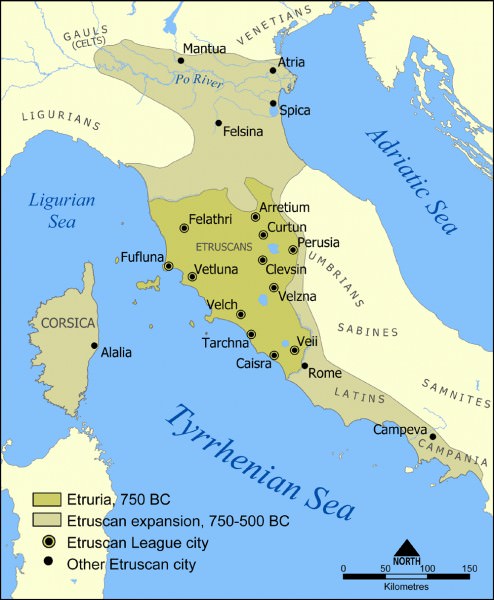
Etruscan Civilization
Finds within the Tomb of the Warrior included a large funerary stele of a warrior carrying a round shield, wearing a Corinthian plumed helmet, and wielding a double-headed axe, a symbol of authority. The 107 cm high sandstone stele is inscribed with the name of the deceased – Avele Feluske. From the Tombe del Duce were the remains of a chariot, a shield, helmet, and horse bits. From the same tomb, a bronze boat and glass paste beads suggest trade relations with Sardinia and Phoenicia, respectively. A silver cup attests to the cultural mix of Archaic Vetulonia with its Greek design but Phoenician decoration.Meanwhile, in the 7th-century BCE tomb Circle of Bes ( Circolo di Bes ) a faience amulet of that goddess, a figure of Ptah, and various scarabs and carved amber figures all illustrate connections with Egypt.
Many other tombs at Vetulonia were exceptionally rich with artefacts such as gold, silver, and amber jewellery, along with sheet and cast bronze works. A fine gold necklace with twenty pendants, each with two human heads, is evidence of Vetulonia's continued craftsmanship in metal. Vetulonian dentists also put gold to good use to create holding wires and false teeth (both single and complete dentures). Bronzework, specifically, takes the form of bowls, censers, ornate tripods and candelabra. One tomb, the Tombe del Littore (Tomb of the Lictors), contained an axe bound with iron rods, the fasces symbol later adopted by magistrates of the Roman Republic, confirming the claim made by the 1st-century CE Roman writer Silius Italicus that the original fasces, ironically a royal symbol, did come from Etruscan Vetulonia. Another common find is bucchero wares, the Etruscan pottery with a distinctive black shiny finish. Finally, the tomb known as the Circolo dei Lebeti, contained bronze cauldrons decorated with heads of sirens and griffins which illustrate, once again, the relations early Etruria enjoyed with the Greek and Near East cultures.

Etruscan Gold Necklace
LOCAL RIVALRIES
During the 6th to 5th century BCE, Vetulonia built city walls to enclose its now 120 ha, perhaps an indication of an increasing threat from their neighbours as competition for resources increased. Roselle (Rusellae) was a particularly prominent neighbour. Although a dip in fortunes seems evident during the mid-6th to mid-5th century BCE and Vetulonia was attacked along with several other Etruscan coastal ports by a fleet from Syracuse in 454 BCE, thereafter, the city continued to thrive despite these rivalries. This is attested by the continued construction of large tumuli tombs and the establishment of satellite communities, notably at Lago dell' Acesa with its important mines. The 5th century BCE was marred by more conflict if the discovery of 125 bashed and incised bronze helmets buried in a ditch by the city walls are taken as tangible evidence of rivalry with other Etruscan towns.
New urban buildings were built in the 4th and 3rd century BCE which include shops and housing, albeit without a marked degree of town planning. One such house, the House of the Terracotta, had an impressive terracotta frieze with figures 40 cm high. The city walls were also repaired in this period, and coins were minted and inscribed with vatl. The end of Etruscan Vetulonia came with the expansion of Rome and its conquest of Etruria throughout the 2nd and 1st century BCE.
MAP
LICENSE:
Article based on information obtained from these sources:with permission from the Website Ancient History Encyclopedia
Content is available under License Creative Commons: Attribution-NonCommercial-ShareAlike 3.0 Unported. CC-BY-NC-SA License